In the world of carbon fiber road bikes, technical specifications often become marketing focal points, with "high modulus" frequently touted as the ultimate indicator of quality and performance. But when examining frames like the Trifox X10 Disc Brake Carbon Road Bike Frame, a more nuanced question emerges: Is higher modulus carbon fiber always better for road bike frames, or does an optimal balance exist that delivers superior real-world performance?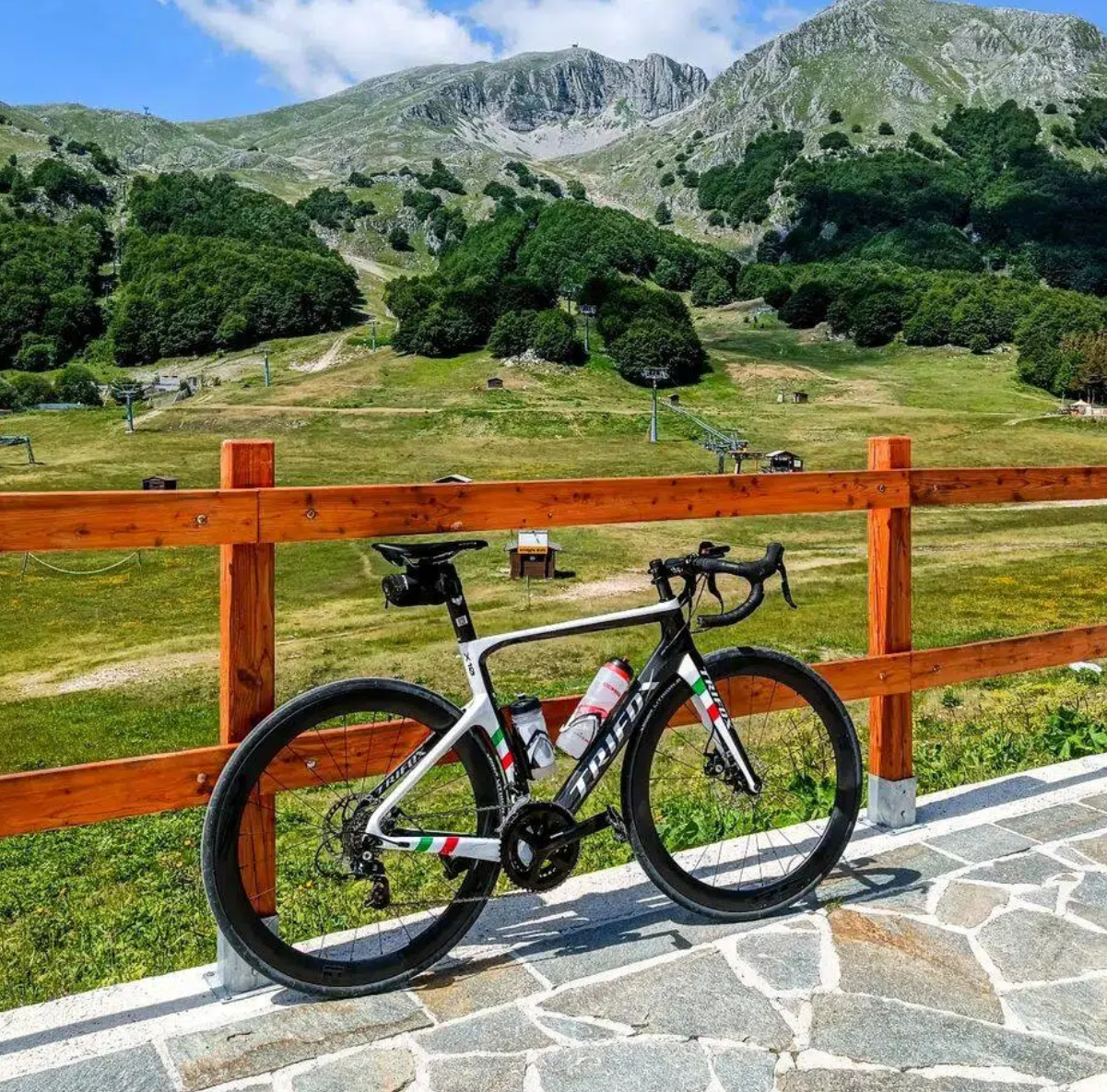
Understanding Carbon Fiber Modulus: The Basics
Carbon fiber modulus refers to the material's stiffness—how much it resists deformation under load. Higher modulus fibers are indeed stiffer and lighter per unit volume, but this advantage comes with trade-offs. Ultra-high modulus fibers can be more brittle and often sacrifice vibration damping characteristics. The Trifox X10 utilizes a sophisticated blend, including T800 and higher modulus variants strategically placed throughout the frame, representing an intelligent engineering philosophy for this road bike frameset.
The Stiffness-Comfort Paradox
Riders often face a fundamental dilemma: maximum power transfer versus long-distance comfort. Pure high modulus carbon frames excel at power transfer but can deliver a harsh ride. The X10 addresses this through strategic fiber placement. High modulus fibers concentrate in high-stress areas like the bottom bracket and head tube, while intermediate modulus fibers in the seatstays and top tube provide controlled flex that absorbs road vibrations—a key consideration in the carbon modulus comparison for real-world riding.
Durability Considerations: Beyond the Laboratory
Laboratory stiffness tests don't always reflect real-world durability needs. Ultra-high modulus carbon can be more susceptible to impact damage. The X10's carbon blend incorporates fibers with excellent impact resistance in vulnerable areas, creating a disc brake road frame that maintains performance through years of use. This durability-focused approach is particularly relevant for disc brake frames where braking forces impose different stresses compared to rim brake designs.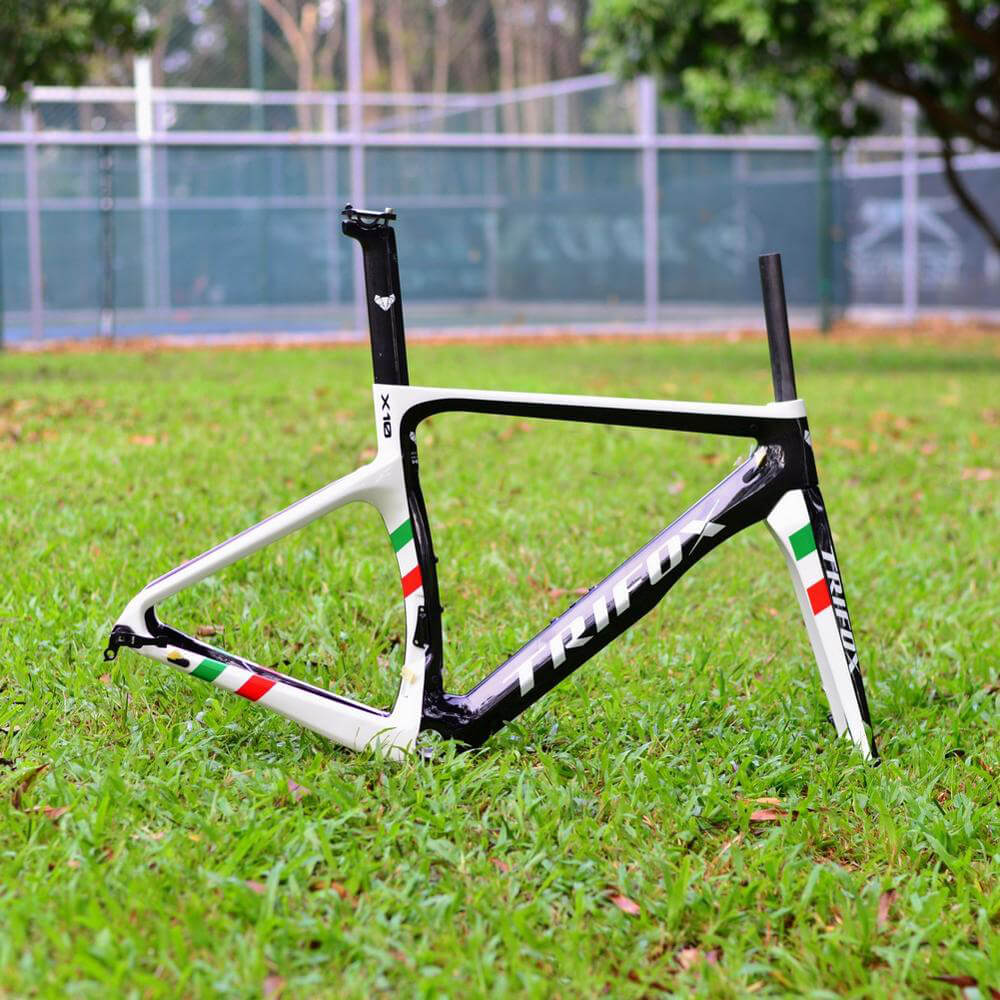
Vibration Damping: The Unsung Performance Factor
Long-distance comfort directly impacts performance. A frame that effectively dampens road vibrations reduces muscle fatigue, allowing riders to maintain power output over extended periods. The X10's carbon selection creates a frame that feels lively and responsive while muting high-frequency vibrations—especially valuable for performance road bike enthusiasts who ride varied road surfaces. This vibration damping characteristic helps conserve energy for climbs, sprints, or technical sections where it matters most.
Weight Optimization: Smart Rather Than Extreme
While high modulus carbon offers theoretical weight advantages, practical frame design involves more than simply selecting the stiffest material. The X10 demonstrates how intelligent carbon use can achieve impressive weight figures (approximately 1100g) without compromising durability or ride quality. This holistic approach results in a frame stiffness that supports building competitive sub-8kg complete bikes without sacrificing other performance aspects.
Value Proposition: Performance Per Dollar
Perhaps the most compelling argument against the "highest modulus equals best" mentality emerges in value considerations. Ultra-high modulus carbon commands premium pricing that doesn't always translate to proportionally better real-world performance. The X10's intelligent carbon blend delivers what most riders actually experience as high performance—responsive acceleration, confident handling, and all-day comfort—at a price point that makes it an exceptional affordable carbon frame option.
Conclusion: Balanced Engineering Over Marketing Extremes
The Trifox X10 exemplifies how intelligent carbon fiber application creates superior real-world performance. Rather than pursuing maximum modulus as an end in itself, the frame's design focuses on delivering a balanced riding experience where stiffness, comfort, durability, and value exist in optimal proportion. For most road cyclists, this balanced approach represents the true pinnacle of frame technology—a carbon fiber road bike frame that feels responsive when pushing hard, comfortable during long rides, and durable enough for years of rewarding use.


In the competitive world of road cycling, weight, performance, and value often exist in a delicate balance. The Trifox X16TA Disc Brake Lightweight Carbon Road Bike Frame disrupts this equation by offering exceptional quality at an accessible price point. With impressive weight specifications, comprehensive sizing, and modern features, this frame has garnered attention from builders seeking professional-level performance without the premium price tag.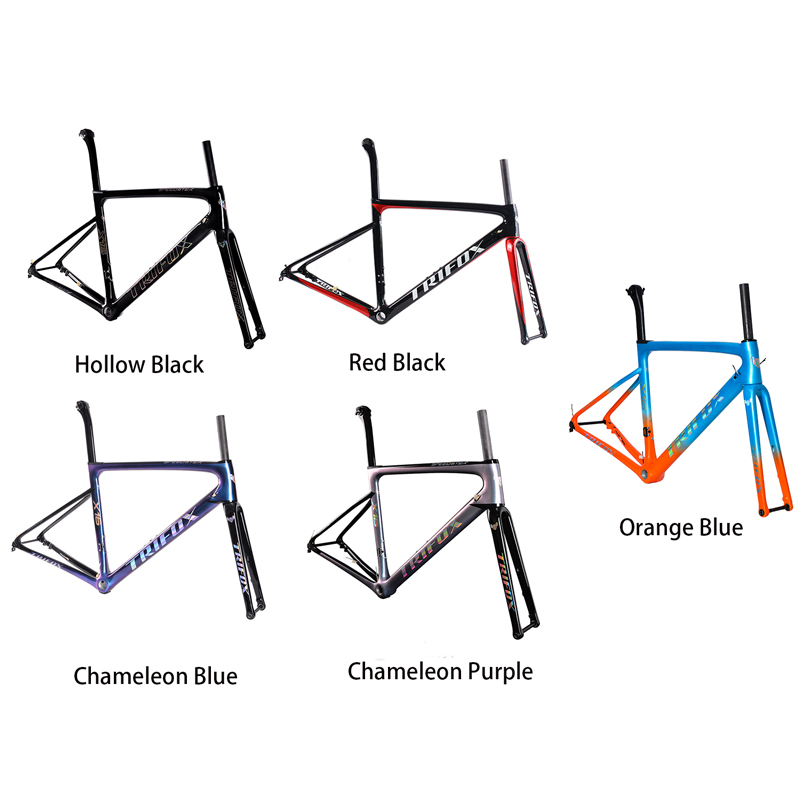
Impressive Weight Savings: From Frame to Complete Build
The weight specifications of the X16TA immediately stand out. At just 971g ± 30g for the popular 44cm size, this lightweight bike frame demonstrates what modern carbon manufacturing can achieve. Documented builds using this frame have achieved complete 7kg road bike weights—an impressive feat that places these builds in the same weight category as bikes costing significantly more. This lightweight characteristic doesn't come at the expense of durability, with the carbon fiber layup providing optimal stiffness for power transfer while maintaining sufficient compliance for rider comfort.
Geometry Optimized for Performance Riding
The X16TA features geometry designed for performance-oriented riding rather than endurance-focused comfort. The carefully calculated angles and tube lengths create a balanced position that's aggressive enough for fast group rides and racing while remaining manageable for most fit riders. This is a true racing bike frame designed for riders who want a responsive, race-ready platform, with comprehensive sizing ensuring most riders can find their perfect fit.
Aesthetic Appeal & Technical Specifications
Visual design plays a significant role, and the X16TA offers appealing options including the previously popular color-shifting blue and the new blue-orange color scheme. The frame features semi-internal routing that keeps the cockpit tidy while maintaining accessibility for maintenance. The frame accommodates tires up to 700C x 28mm and supports both electronic (including Shimano Di2) and mechanical groupsets, offering builders maximum flexibility in component selection.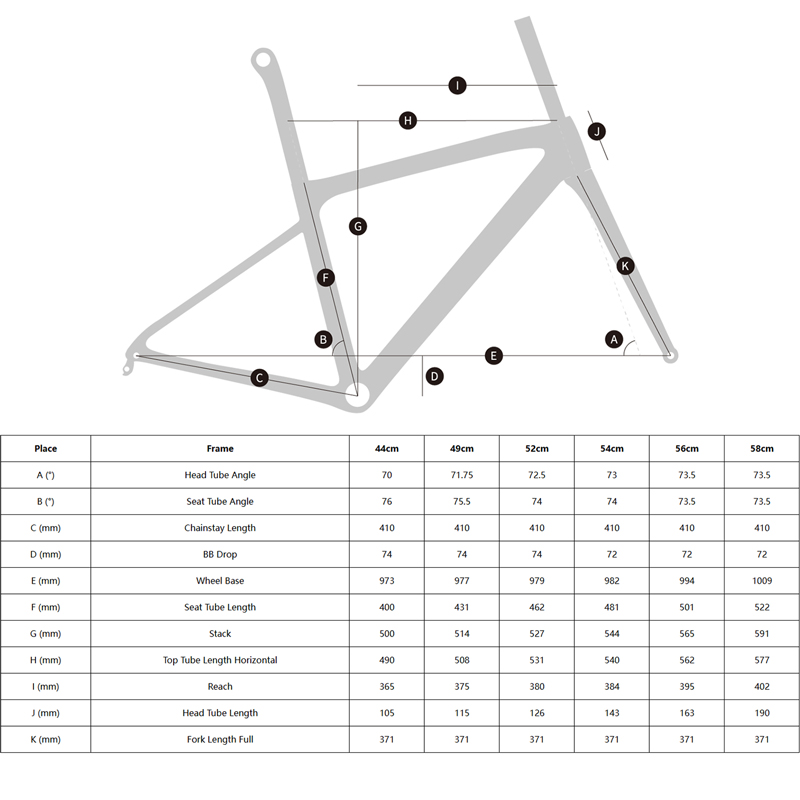
Complete Package & Riding Experience
Unlike many frames sold separately, the X16TA typically comes as a complete road bike frameset including frame, fork, and seatpost. This comprehensive offering represents significant value, as these components are carefully matched to work together optimally. On the road, the X16TA delivers the responsive, lively feel that performance-oriented riders seek, with the disc brake road frame compatibility enhancing the riding experience with consistent, powerful braking in all conditions.
Value Proposition: Performance Within Reach
Perhaps the most compelling aspect of the X16TA is its value proposition as an affordable carbon frame. By offering a lightweight, well-designed carbon frame with modern features at an accessible price point, it opens high-performance road cycling to more enthusiasts. For riders who want to allocate more of their budget toward high-quality components rather than an expensive frame, the X16TA represents an intelligent choice that provides a solid foundation without compromising essential performance characteristics.
Conclusion: A Strong Contender in the Value Segment
The Trifox X16TA Carbon Frame successfully addresses multiple needs for performance-oriented cyclists. Its light weight, comprehensive sizing, attractive color options, and thoughtful technical specifications combine to create a compelling package. For builders seeking a high-quality carbon foundation without the premium price tag, or for riders wanting to experience the benefits of modern carbon frame technology, the X16TA represents an excellent performance road frame option that makes high-quality road cycling more accessible to dedicated enthusiasts.
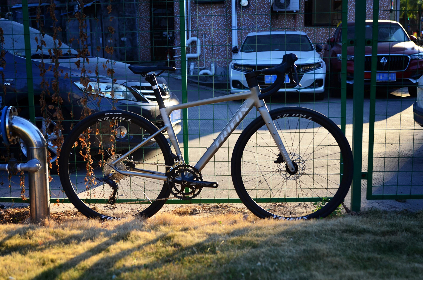
When it's time to choose a road cycle frame, the conversation often jumps straight to carbon fiber. But what if the smarter, more rewarding choice has been here all along? While the lower price of an aluminum road frame is a well-known advantage, the real benefits go much deeper. Modern alloys like those used in the Trifox R241 frameset offer a compelling mix of performance, character, and value that deserves a closer look.
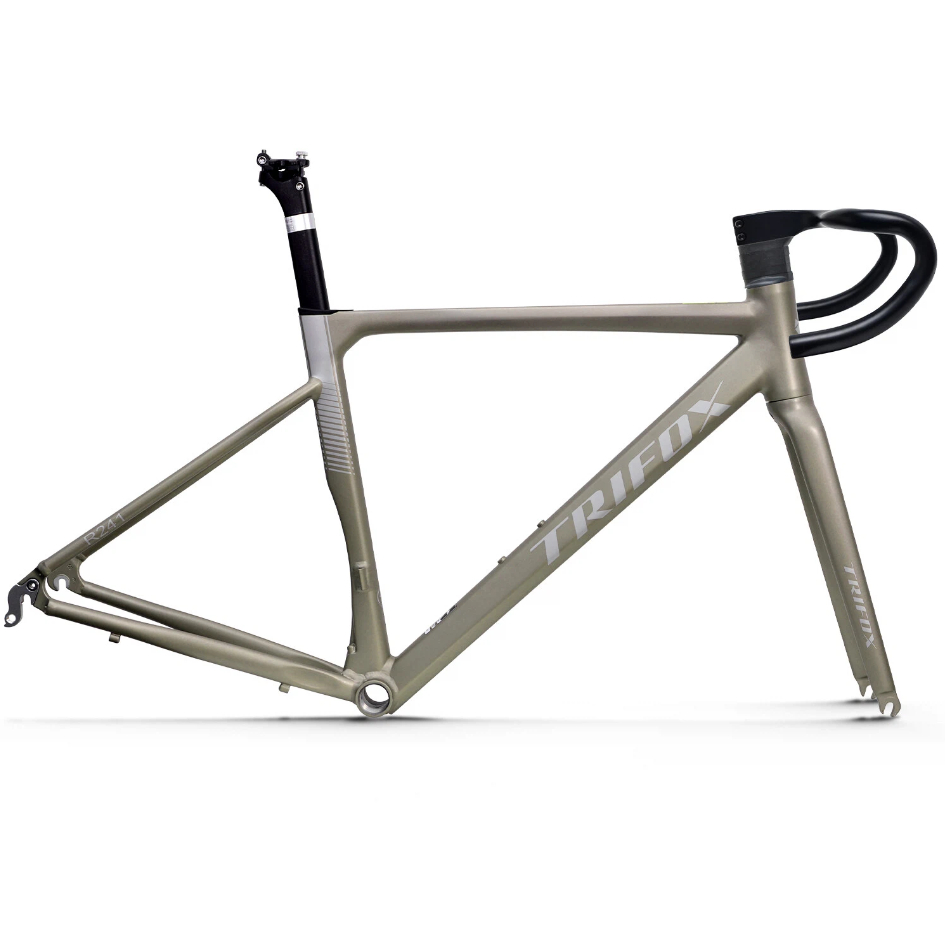
Benefit 1: Legendary Durability and Reliability
For riders who demand a worry-free companion, aluminum road bike frames are exceptionally durable. Unlike carbon, which can be susceptible to impact damage and requires careful handling, aluminum is inherently robust. It can withstand the minor knocks and stresses of daily use, transport, and even the occasional mishap. This makes a frame like the R241, crafted from 6061 aluminum alloy, a perfect "forever frame" or an ideal choice for a dedicated training bike that you can rely on in all conditions.
Benefit 2: A Lively and Responsive Ride Feel
This is where aluminum road frames truly shine. Aluminum has a distinct stiffness that translates to instant power transfer. When you stomp on the pedals, the frame flexes minimally, putting more of your energy directly into forward motion. This creates a lively, snappy, and responsive feel that many riders love, especially for spirited group rides, sprinting, and climbing. It’s a raw, connected sensation that makes you feel every watt of effort is being used efficiently.
Benefit 3: The Perfect Platform for High-End Components
An aluminum road frame like the Trifox R241 offers a brilliant strategy for building a high-performance bike without the high-performance price tag. By investing the money you save on the frame into better components—such as a lighter wheelset, a more precise groupset, or a more comfortable cockpit—you can create a machine that outperforms a pre-built bike with a carbon frame but mediocre parts. The frame becomes the reliable, high-quality foundation for your dream build.
Benefit 4: Surprisingly Refined Modern Engineering
Forget the harsh, jarring ride of old aluminum bikes. Modern hydroforming technology, used in crafting the R241, allows tubes to be shaped into complex, aerodynamically optimized profiles. This means engineers can design frames that are stiff in the bottom bracket for efficiency but tuned in the seat stays and fork to dampen road vibrations. The result is a ride quality that is crisp and efficient, yet far more comfortable than you might expect.?
More Than Just a Budget Option
Choosing an aluminum road frame is not about settling for less; it's about choosing a different set of advantages. It’s a decision that prioritizes durability, a lively and engaging ride character, and smart value that allows for upgrades where they count most.
The Trifox R241 Aluminum Frameset embodies all these benefits. It’s a testament to how far aluminum road bike technology has come, proving that you don't have to sacrifice performance for practicality. It’s the perfect foundation for a responsive, reliable, and incredibly rewarding road machine.
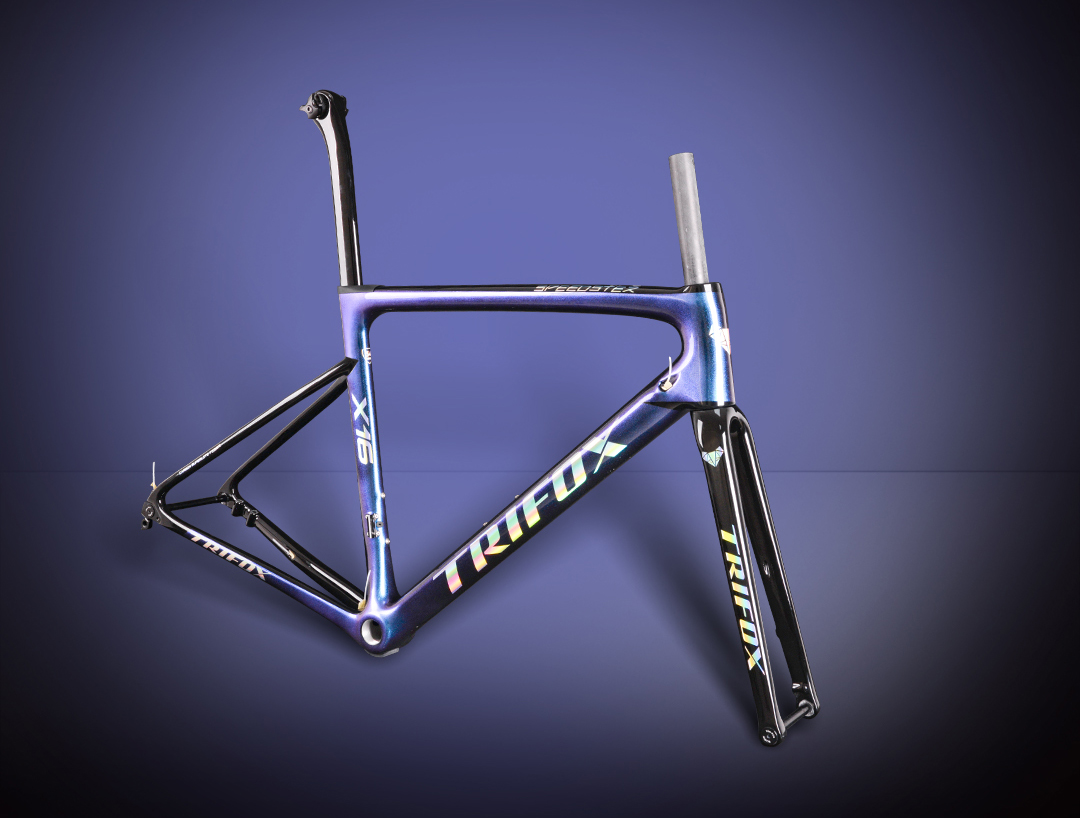
What makes a road bike frame truly popular? It's not just hype – it's the perfect blend of performance, value, and real-world usability. Trifox's X16 Disc Brake Carbon Frame consistently tops their charts, and for good reason. Let's dive into what makes this frame a standout choice for discerning riders:
Uncompromising Lightweight Performance: Crafted from high-modulus T800 carbon fiber, the X16 boasts an impressive frame weight hovering around 900g (size dependent). This translates directly to snappier acceleration, effortless climbing, and a lively, responsive ride that feels eager under power. It's pure road buzz without the penalty.
Disc Brake Dominance: Embracing the modern standard, the X16 features flat-mount disc brake compatibility. This means superior stopping power in all conditions – wet descents, tight corners, or emergency stops – offering consistent modulation and control that rim brakes simply can't match. Confidence is key to speed.
Stiffness Meets Comfort: Trifox engineers didn't just chase grams. The X16 features a stiff front triangle (head tube, down tube, bottom bracket) for razor-sharp handling and efficient power transfer when you stomp on the pedals. Yet, the carefully shaped thin seatstays and fork provide crucial vertical compliance, absorbing road buzz and reducing fatigue on longer rides. You get race-ready feedback without the harshness.
Modern, Versatile Geometry: The X16 strikes a brilliant balance. Its geometry leans towards aggressive (think shorter headtubes, longer reaches) for efficient power output and aerodynamic potential, yet remains accessible enough for spirited club rides and gran fondos. It’s a frame built for speed that doesn’t demand a pro-level contortion.
Smart, Rider-Focused Design:
Threaded Bottom Bracket (BB86): A massive win for reliability and home mechanics. No press-fit creaks here! Easy installation and long-term peace of mind.
Full Internal Cable Routing: Creates a sleek, aerodynamic profile while protecting cables and hoses from the elements. Looks pro, functions flawlessly.
Wide Compatibility: Accommodates electronic and mechanical groupsets, 28c+ tires (great for comfort/rough roads), and standard 27.2mm seatposts for tuning ride feel.
Why the X16 Resonates:
It delivers pro-level pedigree (lightweight carbon, advanced shaping, disc performance) at a direct-to-consumer price that makes high-performance cycling genuinely accessible. You're not paying for flashy marketing or dealer markups – just exceptional engineering focused on the ride.
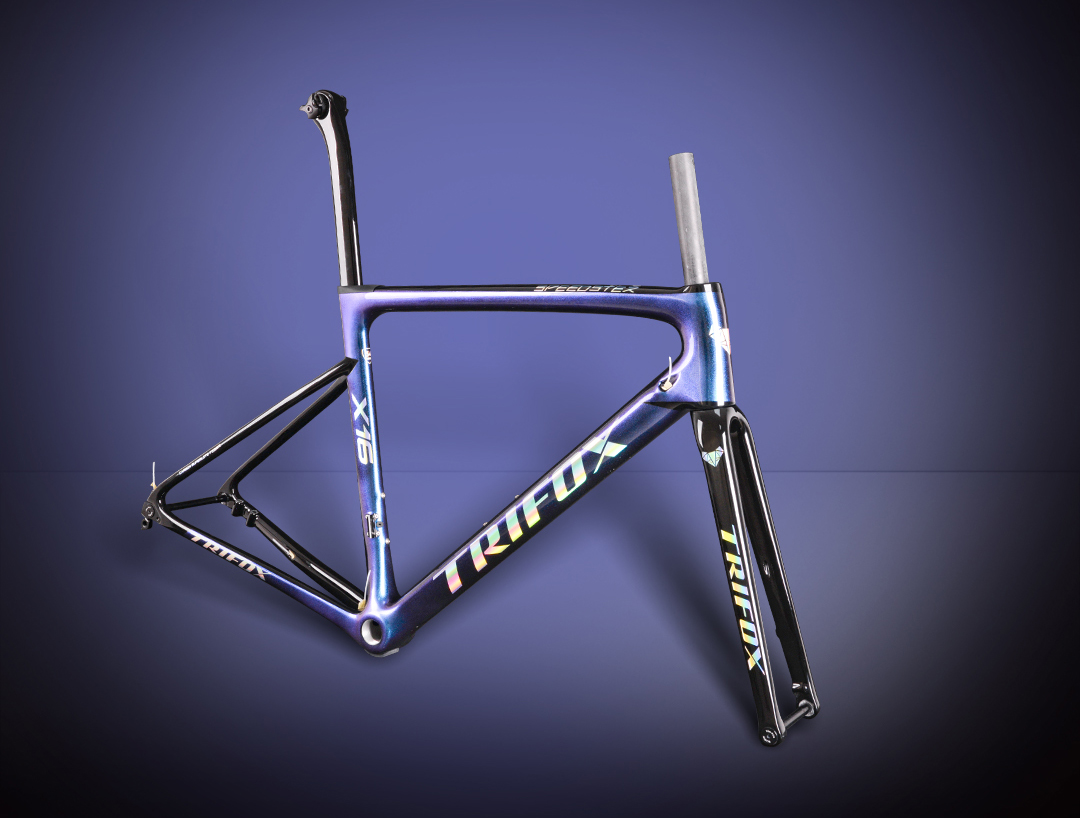
The Trifox X16 isn't just popular; it's popular for a reason. It masterfully combines the essential ingredients modern road riders crave: lightweight carbon efficiency, the confidence of disc brakes, a balanced blend of stiffness and comfort, and practical, reliable design – all wrapped up in a package offering outstanding value. If you're seeking a frame that punches far above its weight class and forms the foundation of a truly exciting road machine, the X16 is Trifox's testament to smart performance.
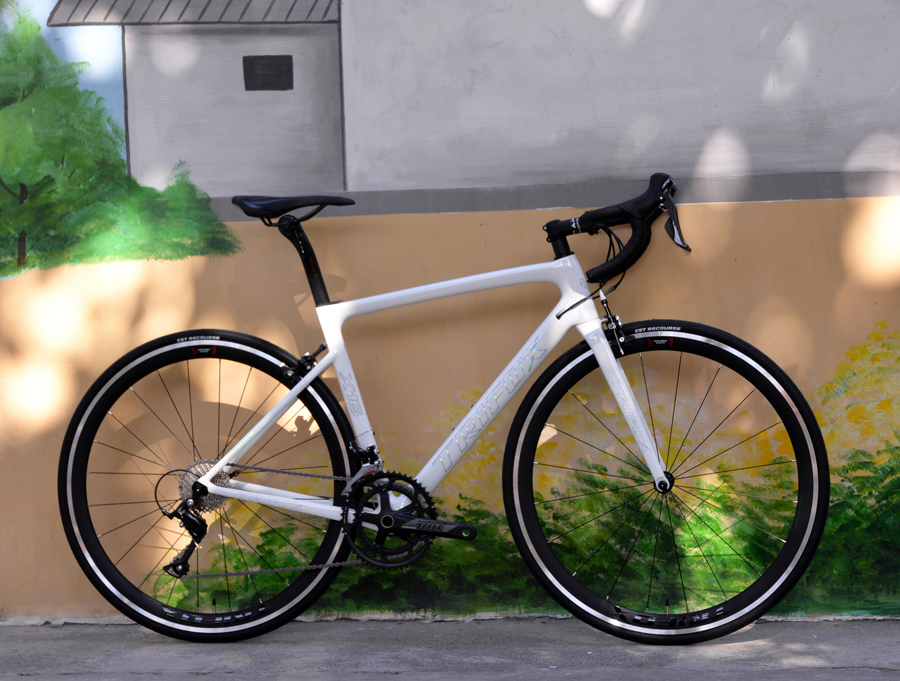
Imagine slicing through headwinds, floating up climbs, and feeling every pedal stroke ignite instant acceleration. This isn’t fantasy—it’s the reality of riding an ultra-light road bike. When your entire machine weighs less than a weekend grocery haul, every aspect of cycling transforms from effort to exhilaration.
Why Ultra-Light Matters:
1. Climbs Become Conquests: Shedding weight is the ultimate climbing hack. A lighter frame demands less energy to defy gravity, turning grueling ascents into rhythmic, rewarding efforts. You’ll crest hills faster—and smile wider.
2. Explosive Acceleration: Stop-and-go traffic? Sprint segments? Ultra-light bikes leap forward with minimal input. The reduced mass means near-instant response to power, making surges feel effortless and races decisive.
3. Agile Handling: Cornering tight descents or navigating technical routes becomes intuitive. A featherweight frame dances beneath you, offering surgical precision and confidence at high speeds.
4. Endurance Boost: Less weight = less fatigue. Ride longer, push harder, and finish strong without the dead-legged feeling of hauling excess mass.
The Trifox Difference:
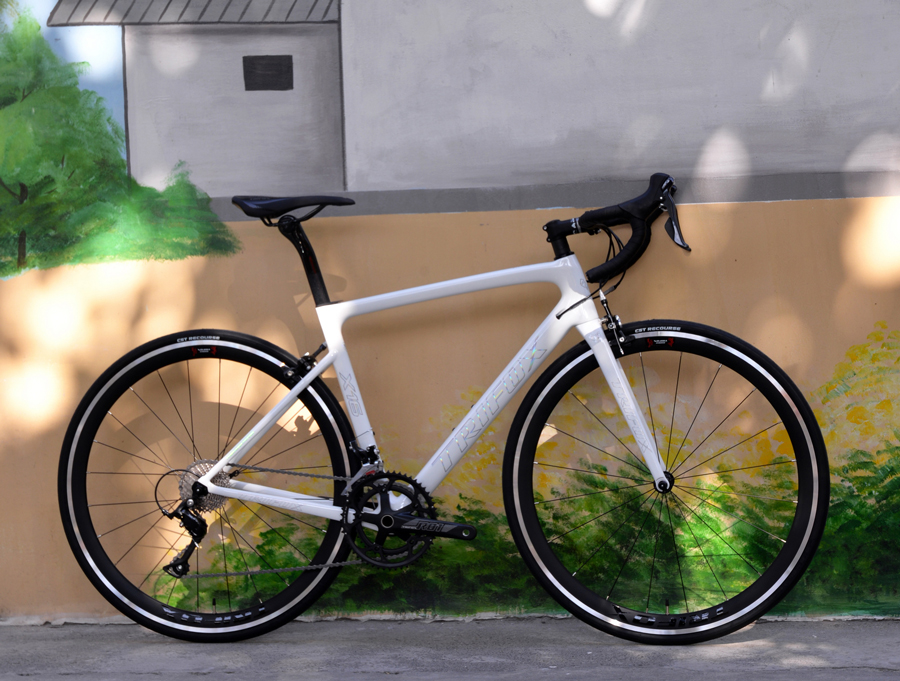
The 700c Carbon Fiber Ultra-Light Road Bicycle isn't just light—it's intelligently engineered. Its monocoque carbon frame blends minimal weight with optimized stiffness, ensuring zero power loss on sprints or climbs. Paired with aerodynamic tube shaping and compatibility with high-end components, it delivers pro-level performance without the pro-level price.
Who It's For:
Climbers: Conquer grades you once walked.
Racers: Gain seconds where they matter most.
Endurance Riders: Cover miles with leftover energy.
Upgraders: Feel your first true "race bike" epiphany.
Ready to Redefine Your Limits?
An ultra-light bike isn't an upgrade—it's a revelation. The Trifox 700C rewrites your relationship with the road, turning struggle into flow and effort into euphoria.
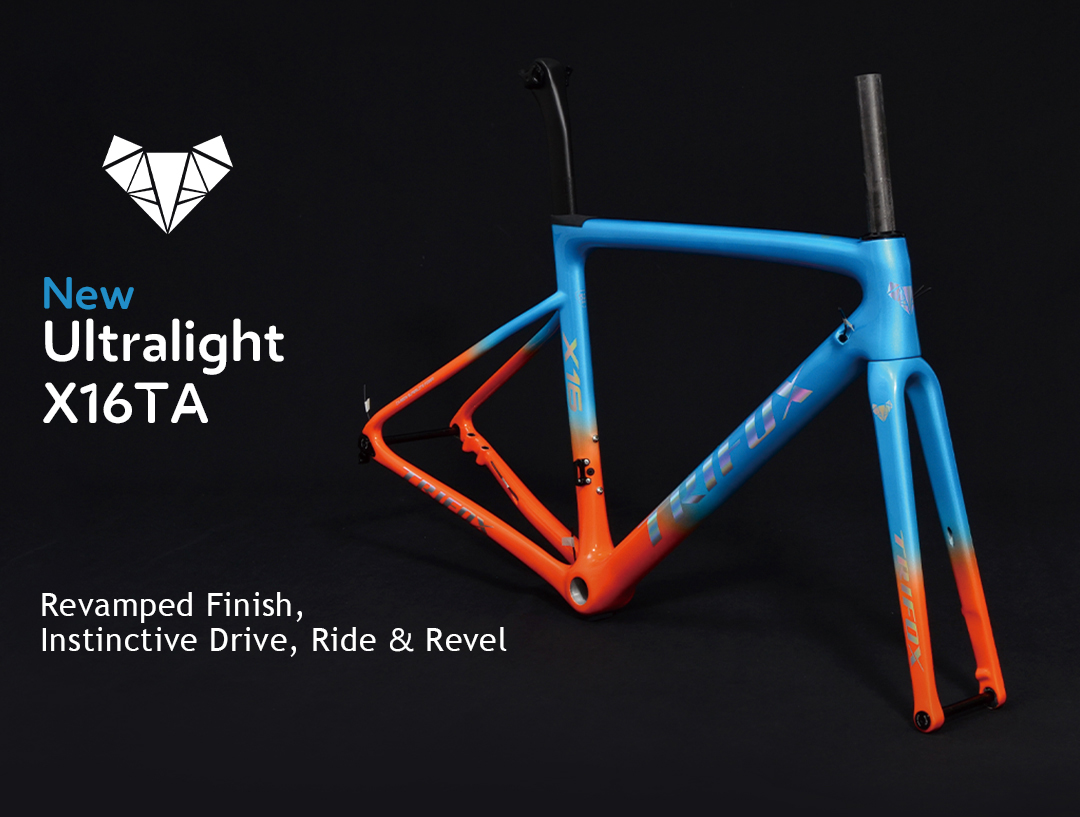
Forget marginal gains – shedding significant weight from your bike's core fundamentally revolutionizes your experience. A super light frame isn't just a number; it's the key to unlocking a new dimension of riding.
The most dramatic transformation? Climbing. Less mass means defying gravity requires drastically less effort. Every pedal stroke feels more efficient, translating directly to faster ascents and reduced fatigue. Hills become challenges to relish, not dread. You accelerate quicker, maintaining momentum with newfound ease.
But the magic extends beyond going up. A lightweight frame enhances handling profoundly. It's more responsive to steering inputs, making cornering sharper and more intuitive. The bike feels like an extension of your body, dancing beneath you with agility. This flickability boosts confidence on descents and technical sections.
Acceleration is where a super light frame truly shines. Whether launching from a stop sign or surging out of a corner, the reduced inertia means the bike leaps forward with minimal effort. It feels eager, alive, translating your power into speed instantaneously. You spend less energy overcoming inertia and more maintaining exhilarating velocity.
The overall ride feel becomes exhilaratingly direct. Road buzz and minor imperfections are communicated, but the frame's stiffness (often inherent in lightweight designs like carbon) ensures power transfer is immediate and precise. You feel connected, efficient, and incredibly fast.
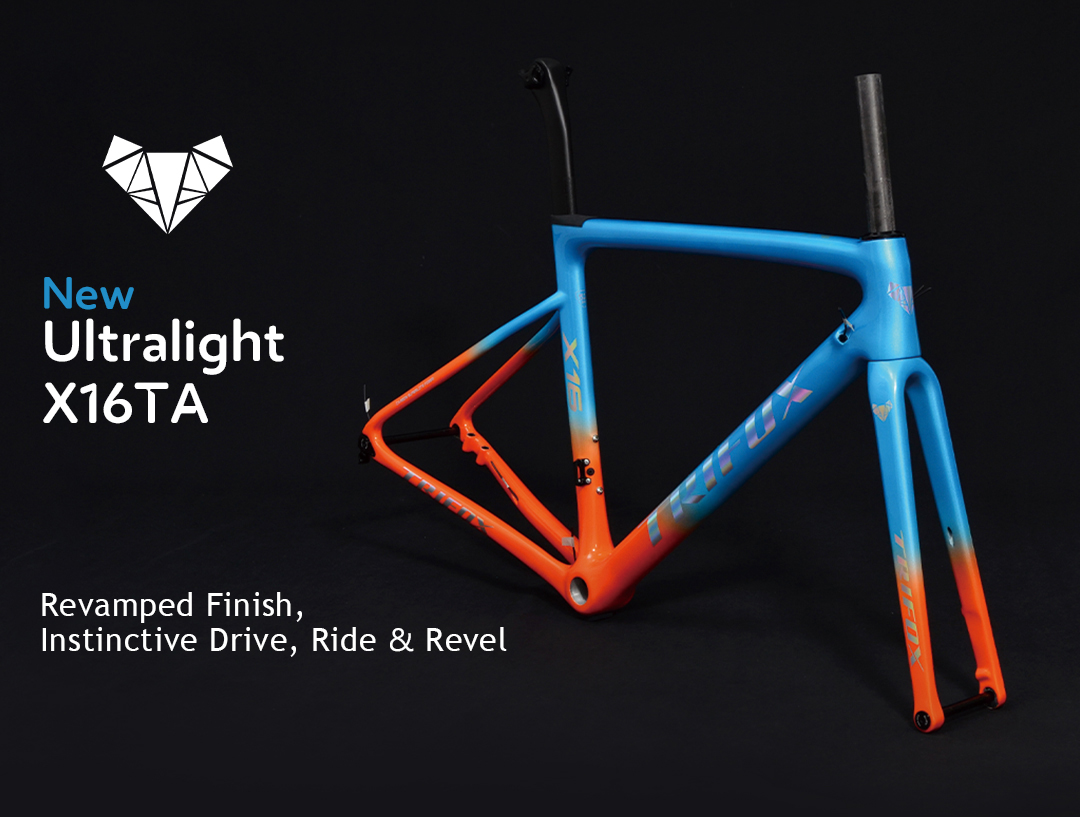
Experience this transformation: Ready to feel the climb vanish and the road come alive? The Trifox X16TA Disc Brake Lightweight Carbon Road Bike Frame embodies this revolution. Engineered for minimal weight and maximum performance, it's the foundation for your fastest, most responsive ride yet. Discover how a super light frame changes everything: Less weight, more ride.

Yes, you read that right. $299 for a full Aero Carbon Road Bike Frame. Trifox Bike's X8 model is dropping jaws and potentially barriers to entry for carbon performance. But is this too good to be true? Let's break it down.
What You Get (Specs Matter!):
Material: Toray T800 Carbon Fiber . This is a legitimate, high-modulus grade used by many reputable brands.
Weight: Claimed ~1250g (size M) – impressively light for the price.
Aero Design: Truncated airfoil tube shapes, integrated seatpost clamp, and aero seatpost (included!) aim to cheat the wind.
Compatibility: Designed for rim brakes (V-brakes/cantilevers - crucial point!), standard road groupsets (Shimano 10/11s), and a conventional cockpit. Includes headset, seatpost clamp, and derailleur hanger.
If you dream of a lightweight carbon build but have champagne taste on a beer budget, this is your starting block.
Prioritize weight and aero gains? Don't mind rim brakes? This could be a rocket ship.
Experienced Tinkerers: Comfortable sourcing parts and building a bike? The value proposition is immense.

The Trifox X8 frame is a legitimate disruptor. For $299, you get a very light, aero-profiled carbon frame using reputable materials.
Is it worth it? If you understand the limitations, crave a lightweight carbon project, and prioritize raw speed/weight over all-weather braking and cutting-edge standards, this deal is borderline revolutionary. It proves high-performance carbon can be accessible.
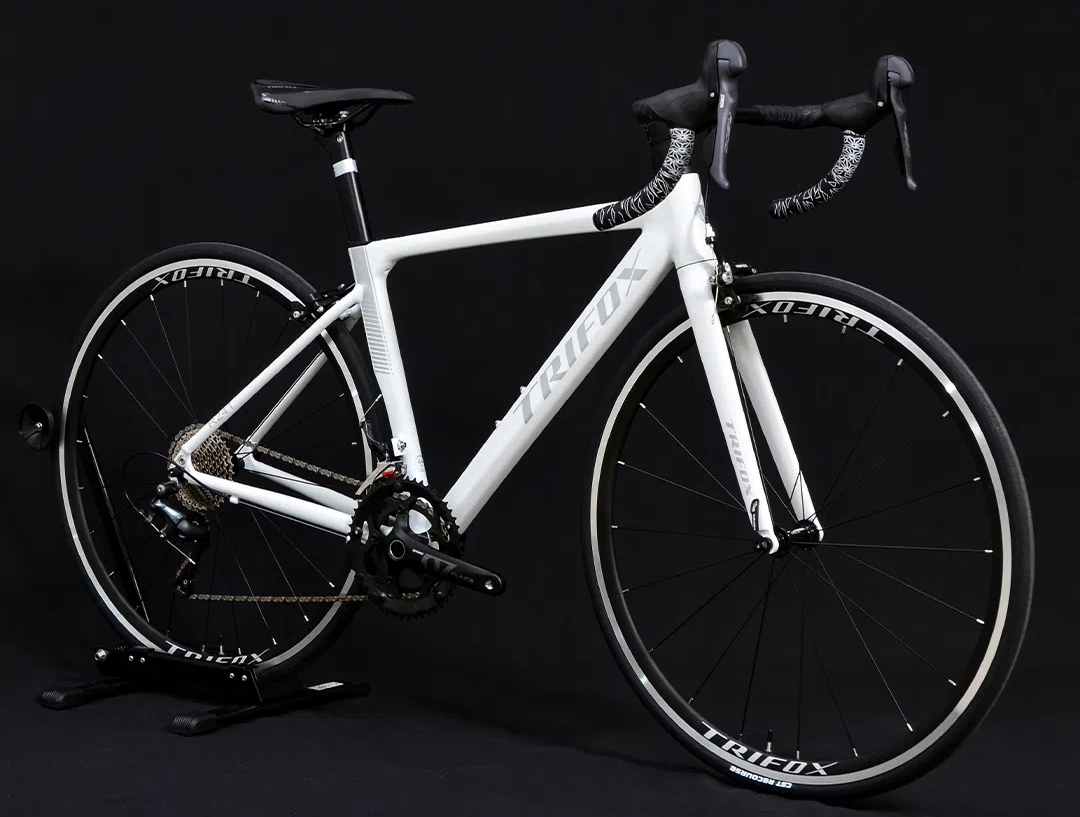
Looking for a capable, lightweight entry into road cycling without breaking the bank? The Trifox 2024 C-Brake Ultralight Aluminium Frame Road Bike, equipped with a Shimano Tiagra R4700 2x10spd groupset, presents a compelling package centered around classic rim brakes ("C-brakes"). Let's break down what this 700c aluminium machine offers.
The Core Proposition: Lightweight & Efficient
The headline act is the "ultralight" 700c aluminium frame. Trifox claims a total bike weight around 9.5kg, which is impressive for a sub-$800 bike. This low weight translates directly to easier acceleration and climbing, a major plus for new riders tackling hills or anyone seeking a responsive ride. The 700c wheels are the road standard, prioritizing rolling efficiency and speed on smooth surfaces.
Groupset: Reliable Tiagra Performance
Shimano's Tiagra R4700 groupset is the standout component here. Sitting just below the 105 tier, it offers:
- Smooth & Precise Shifting: 10-speed gearing provides ample range (likely a compact crankset like 50/34T paired with an 11-32T or 11-34T cassette) for varied terrain.
- Durability: Tiagra is known for its robust performance and longevity, perfect for regular training, commuting, or sportives.
- Modern Features: R4700 benefits from trickle-down tech from higher groupsets, offering crisp lever feel and reliable operation. The 2x10 setup gives plenty of gears for most situations.
The "C-Brake" Focus: Classic Stopping Power
This bike uses traditional rim brakes (caliper brakes). In the era of disc dominance, this is a deliberate choice impacting price and performance:
Significantly lighter weight than disc brake systems, contributing to the bike's low overall mass. Simpler maintenance – easier to adjust, pad changes are quick and cheap. Generally more aerodynamic. Keeps the price point aggressively low.
Wheelset & Finishing Kit
The included R4700 wheelset is a typical OEM offering: functional, durable, and reasonably lightweight, but not a performance highlight. They get the job done reliably. Expect basic but serviceable finishing kit (handlebar, stem, seatpost, saddle) designed for comfort and fit adjustment.
Target Rider & Verdict
This Trifox bike is squarely aimed at:
1. New Road Cyclists: Seeking a lightweight, efficient first road bike with reliable shifting.
2. Budget-Conscious Riders: Wanting maximum performance for minimal outlay.
3. Fair-Weather/Fitness Riders: Primarily riding in dry conditions where rim brakes are perfectly adequate.
4. Weight Weenies on a Budget: Prioritizing low overall weight above all else.
Is it a Good Buy?
For the right rider, absolutely. Exceptional value for a full Tiagra groupset. Very competitive lightweight frame. Efficient 700c wheelset. Classic, simple road bike feel. Easy maintenance.
The Trifox Ultralight Tiagra C-Brake bike is a smartly specced budget road rocket. It delivers the core road cycling experience – lightweight efficiency and smooth, reliable shifting via Shimano Tiagra – by embracing the simplicity and cost savings of rim brakes. If you prioritize weight and value, ride mostly in good conditions, and want proven componentry, this is a compelling contender that punches well above its price point.
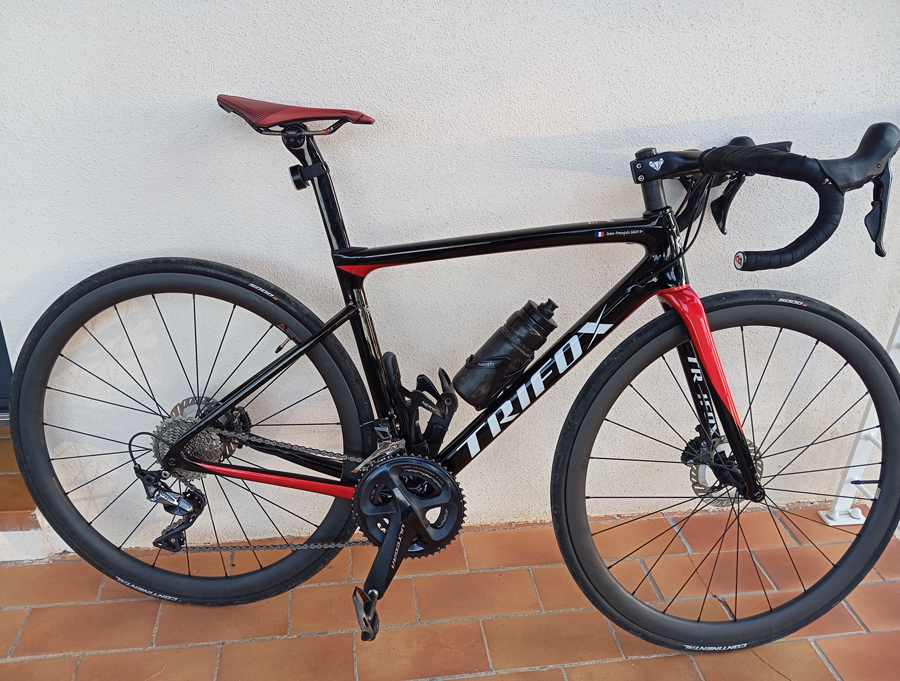
Dreaming of effortless climbs and responsive sprints? A lightweight road bike unlocks that exhilarating ride. But with countless options, choosing "the one" can feel overwhelming. Let’s break down the key factors to find your perfect featherweight steed:
1. Frame Material: The Core of Lightness
- Carbon Fiber (King of Light): The go-to for serious weight savings. Offers an exceptional strength-to-weight ratio, vibration damping, and aerodynamic shaping. High-modulus carbon delivers the ultimate lightness and stiffness (like the Trifox Carbon Fiber Ultra-Light Road Bicycle). Consider frame grade (T700, T800, T1000) – higher usually means lighter/stiffer but pricier.
- Aluminum: A great value option. Modern hydroformed alloys are surprisingly light and stiff, though often slightly heavier and harsher than carbon. Ideal for budget-conscious riders wanting performance.
- Titanium: Luxuriously smooth, corrosion-resistant, and reasonably light, but typically heavier than top carbon and significantly more expensive. A niche, durable choice.
- Steel: Beloved for its classic ride quality (smooth, compliant), but generally the heaviest option. Modern alloys are lighter, but rarely compete on pure weight.
2. Components: Where Grams Add Up
Lightweight frames need lightweight partners:
- Groupset: Higher-tier groupsets (Shimano Ultegra/Dura-Ace, SRAM Force/Red, Campagnolo Chorus/Record/Super Record) use more carbon fiber, titanium, and advanced alloys to shed grams. Focus on the drivetrain (crankset, derailleurs, cassette) and brakes.
- Wheelset: This is CRUCIAL! Lightweight carbon wheels make a massive difference in acceleration and climbing. Look for low rim weights and consider aerodynamic profiles too. Quality hubs (sealed bearings) ensure smooth rolling.
- Cockpit & Finishing Kit: Carbon handlebars, seatposts, and saddles contribute noticeable savings. Every gram counts!
3. Geometry & Fit: Light AND Right
A super-light bike is useless if it doesn’t fit! Consider:
- Riding Style: Race geometry is aggressive (low, stretched). Endurance geometry is more relaxed (taller headtube, shorter reach) for comfort on long rides. Choose what suits your goals.
- Professional Sizing: Don't guess! Get a professional bike fit or at least use sizing charts meticulously. The right size ensures efficiency, power transfer, comfort, and prevents injury.
4. Balancing Priorities: Weight vs. Everything Else
- Budget: Lightweight comes at a premium, especially carbon fiber and top components. Set a realistic budget. Sometimes, a slightly heavier frame with better wheels/components is smarter than the lightest frame with budget parts.
- Ride Quality: Ultra-stiff frames/wheels can feel harsh. Look for frames designed with compliance (like specific carbon layups) if comfort is key.
- Durability: Ensure the lightweight construction doesn't sacrifice reliability, especially for wheels and critical components.
Putting it Together: Your Checklist
1. Set Your Budget: Be realistic.
2. Prioritize Frame Material: Carbon is the lightweight benchmark.
3. Focus on Wheels: Allocate a significant part of your budget here.
4. Choose Appropriate Groupset Tier: Match performance level and weight goals.
5. Get the RIGHT SIZE & Geometry: Non-negotiable for performance and comfort.
6. Consider Finishing Kit: Carbon bars/seatpost for final tuning.
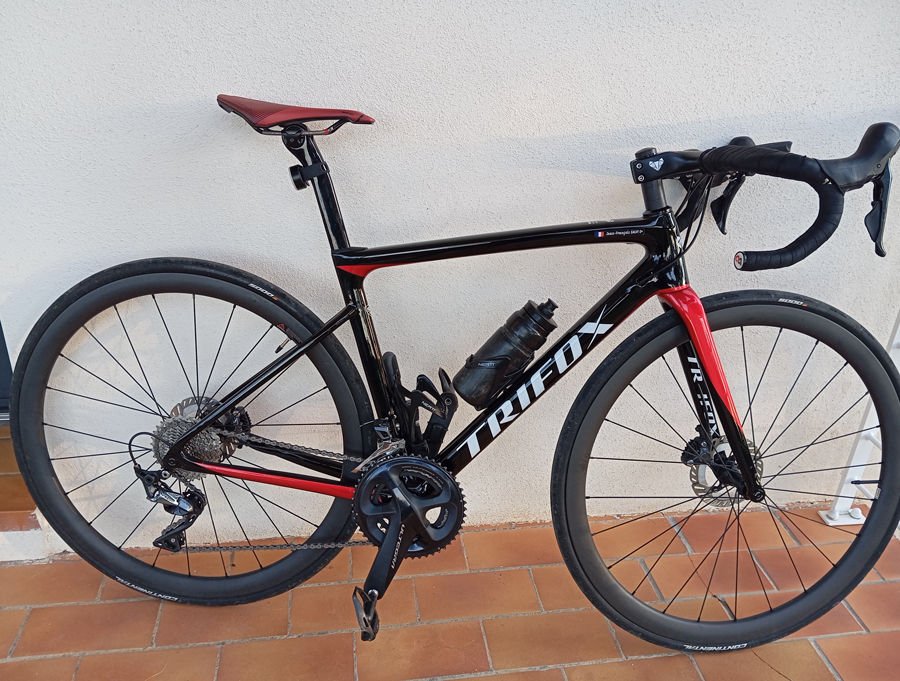
For riders seeking the pinnacle of carbon engineering focused on minimal weight without sacrificing stiffness, explore dedicated ultra-light platforms.
The Trifox 700c Carbon Fiber Ultra-Light Road Bicycle exemplifies this pursuit, showcasing how high-modulus carbon creates a responsive, agile machine built for conquering climbs and accelerating with ease. Remember, the perfect lightweight bike is the one that fits you perfectly and brings a smile to your face on every ride!


























































